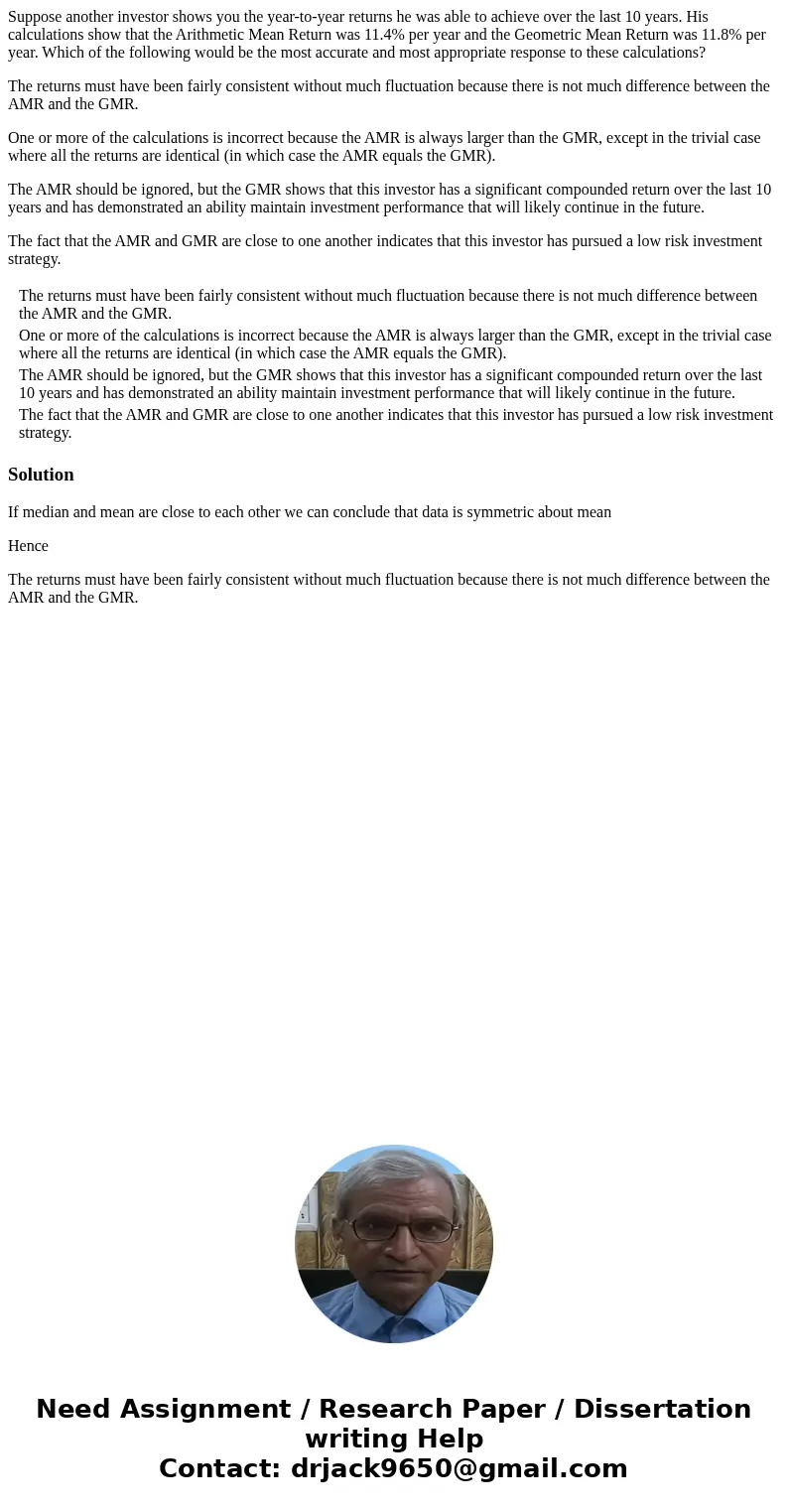Suppose another investor shows you the yeartoyear returns he
Suppose another investor shows you the year-to-year returns he was able to achieve over the last 10 years. His calculations show that the Arithmetic Mean Return was 11.4% per year and the Geometric Mean Return was 11.8% per year. Which of the following would be the most accurate and most appropriate response to these calculations?
The returns must have been fairly consistent without much fluctuation because there is not much difference between the AMR and the GMR.
One or more of the calculations is incorrect because the AMR is always larger than the GMR, except in the trivial case where all the returns are identical (in which case the AMR equals the GMR).
The AMR should be ignored, but the GMR shows that this investor has a significant compounded return over the last 10 years and has demonstrated an ability maintain investment performance that will likely continue in the future.
The fact that the AMR and GMR are close to one another indicates that this investor has pursued a low risk investment strategy.
| The returns must have been fairly consistent without much fluctuation because there is not much difference between the AMR and the GMR. | ||
| One or more of the calculations is incorrect because the AMR is always larger than the GMR, except in the trivial case where all the returns are identical (in which case the AMR equals the GMR). | ||
| The AMR should be ignored, but the GMR shows that this investor has a significant compounded return over the last 10 years and has demonstrated an ability maintain investment performance that will likely continue in the future. | ||
| The fact that the AMR and GMR are close to one another indicates that this investor has pursued a low risk investment strategy. |
Solution
If median and mean are close to each other we can conclude that data is symmetric about mean
Hence
The returns must have been fairly consistent without much fluctuation because there is not much difference between the AMR and the GMR.

 Homework Sourse
Homework Sourse